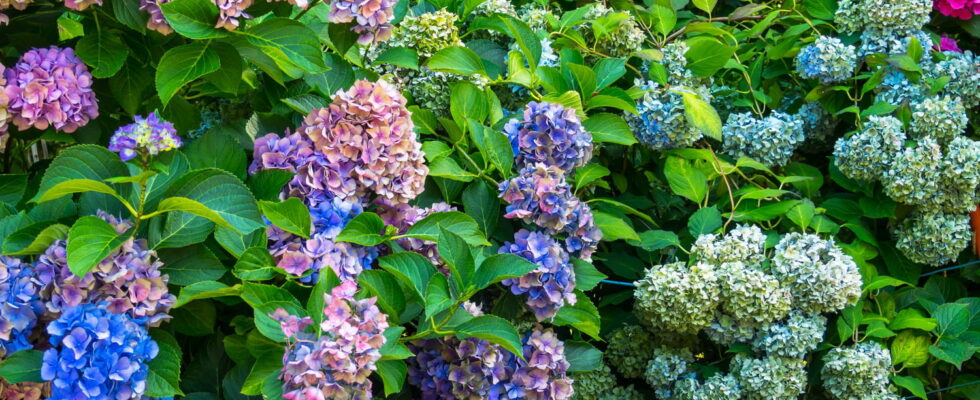To have magnificent hydrangeas next summer, here are the three gardening tasks to carry out now.
Hydrangeas, with their generous and colorful flowers, bloom from June to September. To obtain an impressive flowering, with larger and even more colorful flowers next year, it is now that it comes into play, because it is in autumn that the plant prepares for its flowering the following year.
Here are the essential actions to take as soon as the flowers begin to fade, to encourage your hydrangeas to produce more vigorous flowers next year, but also to keep the shrubs visually pleasing the rest of the year. One of the secrets to getting bigger flowers is pruning hydrangeas (a first pruning in fall and a second in spring). However, you have to be careful about the variety you have in your garden.
Classic hydrangeas (Hydrangea macrophylla) bloom on the previous year’s wood. It is therefore important not to prune too harshly. In autumn, choose light pruning: only remove faded flowers and dead or diseased branches. This pruning allows the plant’s energy to be concentrated on the new shoots.
For other varieties, such as panicle hydrangea (Hydrangea paniculata), which flowers on the current year’s wood, you can prune a little deeper, reducing the stems by about a third. This pruning will encourage the growth of new robust branches and more spectacular flowering. Also take the opportunity to clean the base of the plant. Any debris left around plants can provide a perfect hiding place for harmful pests, which is why debris (leaves, branches, wilted flowers, etc.) must be removed.
Another simple gesture to feed the shrubs is to add compost or well-decomposed manure to the base of the plant. This will enrich the soil and improve its structure, while providing essential nutrients over the long term. This supply of organic matter also helps maintain good humidity around the roots during the winter.
Although hydrangeas are relatively hardy, protecting them from the cold is essential for their good health. In autumn, consider mulching the base of your hydrangeas with dead leaves, bark or garden mulch. This mulch will not only protect the roots from frost, but also maintain constant humidity throughout the winter, thus reducing the risk of water stress.
In addition, this simple gesture promotes better recovery in spring, when temperatures rise. Organic mulch decomposes over time, providing additional nutrients to the soil, which is beneficial for hydrangea growth.
